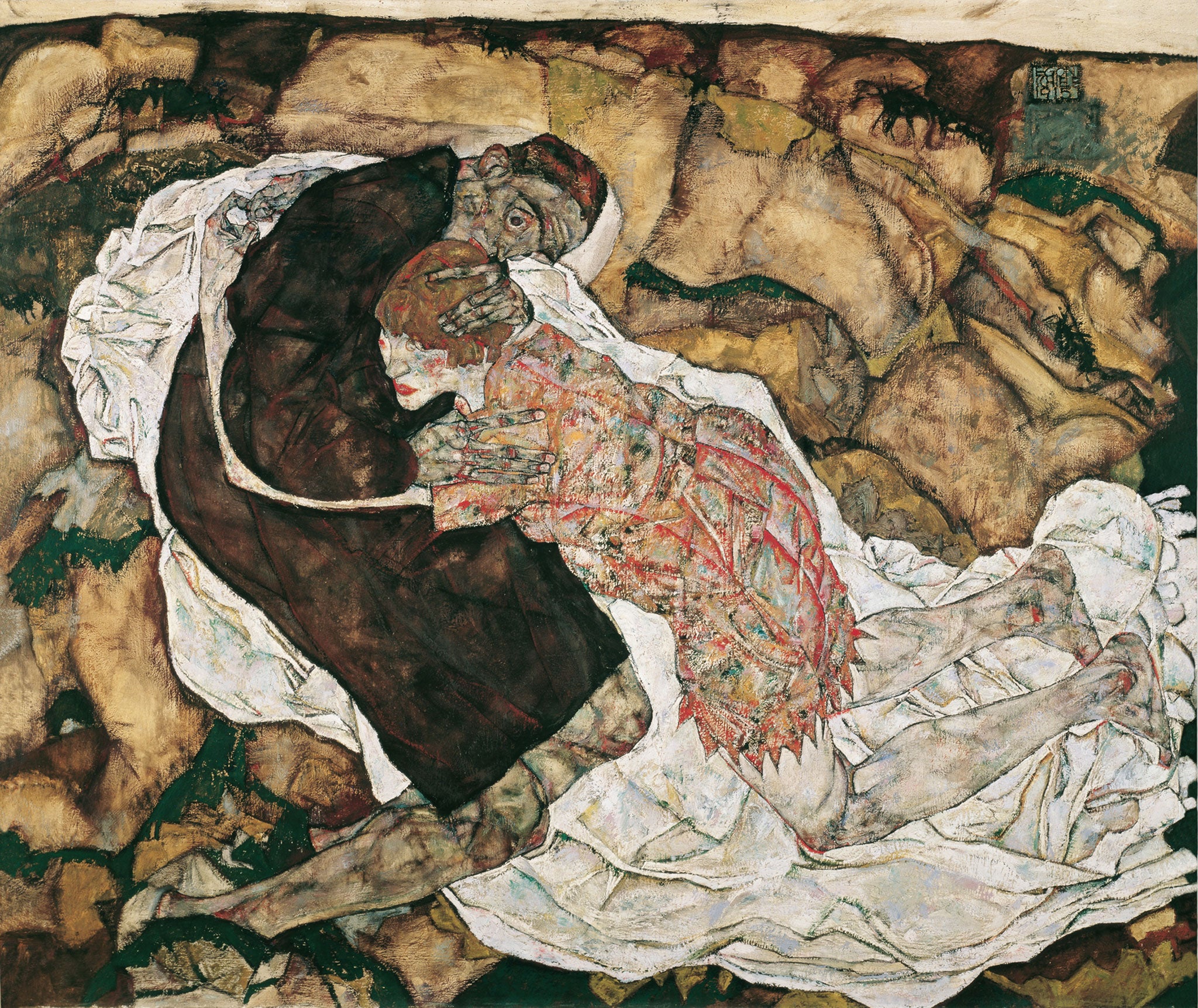Great Works: Death and the Maiden (1915-16) by Egon Schiele
Osterreichische Galerie Belvedere, Vienna

Your support helps us to tell the story
From reproductive rights to climate change to Big Tech, The Independent is on the ground when the story is developing. Whether it's investigating the financials of Elon Musk's pro-Trump PAC or producing our latest documentary, 'The A Word', which shines a light on the American women fighting for reproductive rights, we know how important it is to parse out the facts from the messaging.
At such a critical moment in US history, we need reporters on the ground. Your donation allows us to keep sending journalists to speak to both sides of the story.
The Independent is trusted by Americans across the entire political spectrum. And unlike many other quality news outlets, we choose not to lock Americans out of our reporting and analysis with paywalls. We believe quality journalism should be available to everyone, paid for by those who can afford it.
Your support makes all the difference.We seem to be watching from above, at a high vantage point, as if from a helicopter in a war zone. The painting turns beneath our gaze, clockwise or counter-clockwise, as if our eye might be the pin at the centre of the Catherine wheel.
At first, the overall effect seems to be one of brilliant patterning. The shapes of the two central figures, desperately clinging and cleaving, so utterly dominating, appear to mimic the shapes of the hill-like forms that both surround them and seem to press forward and into them from behind. The shape of the woman's buttocks is akin to the buttocky roundedness of those hill shapes.
The long, rising curve of the man's back seems to mimic the idea of the upward rising of some great geological formation. That back is the world in its primal making. The two of them, utterly bonded and at one in their aloneness with each other, float above those hills, on that rucked fling of white fabric, as if this is some kind of a dream of what is happening to them. Is this a tragic clinging to life's only certitude: death?
The painting also puts us in mind of the circumstances of Schiele's own life at this moment. He is on the eve of conscription. Perhaps then the mood of this painting is being tainted and informed by the thought that he is being spirited away into the arms of death. He has also just chosen between two women in his life, with great callousness. One he has married, the other, a model of long standing, he has abandoned.
There is therefore a tremendous tension about all this clinging and cleaving. The figures themselves are pure, distilled essence of Schiele: that slightly awkward boniness; the tapering fingers. Schiele's human bones often tend to look twiggy, over-extended and often even badly assembled, as if they might all of a sudden fall apart at the mighty clap of god's hands. There is often a strange wrenching and writhing about the way in which one human relates to another, as if nothing will ever be settled. He was often inclined to paint or draw human beings in pairs, writhing around and through each other like reptiles.
After his marriage, his portraiture began to look more calm, more serene, less tortured, the human body itself a more wholesome subject altogether, less clinging to life as if to the spar of a boat in mid-ocean. Not so here. The embrace here is a strangely unsatisfactory one: repulsion and embrace all in one. Perhaps it is as much a matter of necessity rather than desire. No one can outlive the claims of death.
The man's stare is blank and wild, disinterested, otherwhere engaged – look at that distended pupil. With the long and bony fingers of his left hand he appears to be caressing, as if dispassionately evaluating, the dome of the woman's skull. The impulse of the other hand appears to suggest that he may be repulsed by the way in which she is exaggeratedly enwrapping him with the long curve of her left arm.
That curiously long arm of hers is rendered all the thinner, longer and stranger-looking by the fact that the sleeve of his coat part-conceals it. Her fingers – are they loosening their grip even as they embrace him? – are turning and twisting about. We have noticed that he appears to be disengaged from this embrace – even though it is everything that is happening here. She too looks askance, into the middle distance. There is no pleasure in that look of hers.
Meanwhile, everything behind and beneath them, all that agitated landscape, seems to be engaged in a kind of heaving, in-and-out breathing, erotic dance of sorts, coaxing the two of them into a dance of death. In this case, the last dance with death perhaps. Or the last dance with the jilted or jilting lover.
About the artist: Egon Schiele (1890-1918)
The Austrian painter Egon Schiele was born at Tulin on the Danube, and studied at the Vienna Academy of Art. At first influenced by Klimt, between 1909 and 1913 he developed a mature style that is generally characterised as expressionist. A brilliant draughtsman, he worked at great speed, and produced a body of work – paintings, drawings, watercolours – that was utterly distinctive. Although an official war artist, he died not in battle but after contracting Spanish influenza.
Join our commenting forum
Join thought-provoking conversations, follow other Independent readers and see their replies
Comments